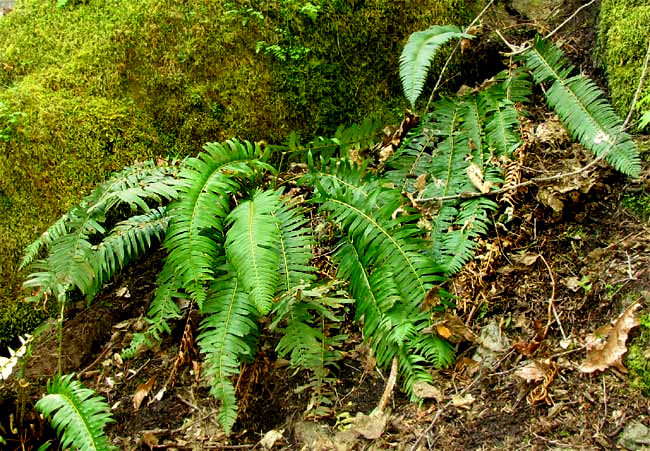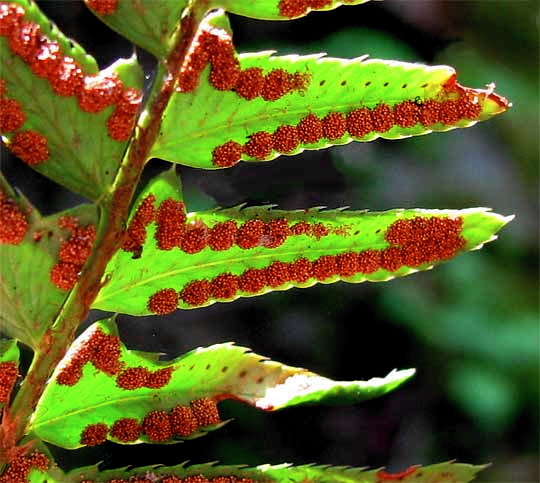Excerpts from Jim Conrad's
Naturalist Newsletter

from the May 3, 2009 Newsletter, issued from the Siskiyou Mountains west of Grants Pass, Oregon:
SWORD FERNS
This spring in Mississippi I told you how abundant the Christmas Fern was in the woods around my camp. Nearly as common here is a fern strikingly similar to the Christmas Fern. In fact, it belongs to the same genus, Polystichum. The ferns here are known as sword ferns and you can see them below a nearby boulder above.
Spore-producing fruit-dots, or sori, on the Christmas Fern occur just on leaflets, or pinnae, at the fronds' tips, and those fertile pinnae are abruptly smaller than the pinnae below them on the same frond. In contrast, sword fern sori occur on the undersides of normal-sized pinnae more generally distributed along the frond. You can see round sword-fern sori below:

In that picture you can see that each round sorus is composed of dozens of spherical items. Those are not spores, but rather stalked, baglike sporangia filled with several spores. When the sporangia are ripe they burst, release the spores, and the wind carries the spores to new locations where, if environmental conditions are just right, they germinate to form fern prothalli, from which eventually new ferns will emerge.
Two sword-fern species live in our area, Polystichum munitum and P. imbricans. They're so similar and share so many overlapping features that imbricans has been considered a subspecies of munitum, plus they hybridize. The fern in the picture has more features of P. munitum than P. imbricans. P. munitum often is called the Western Sword Fern and occurs along the Pacific coast from southeast Alaska south to southern California, with isolated populations here and there farther inland.
In deep, heavily shaded ravines with white water gushing among boulders smothered beneath thick moss, sometimes sword ferns produce green cascades of dark green, leathery-evergreen, six-ft-long fronds. You can hardly imagine a greener, wetter, more temperate-rainforest setting and as soon as I can get into such a place with my camera properly protected from the humidity and with a tripod I'll show you what it looks like.
In garden shops the ferns sold in hanging baskets often are called sword ferns, but they are something different, usually the closely related Nephrolepis exaltata. That mostly tropical fern has mutated into many interesting forms, some of which are sterile and thus bearing no sori. Sterile ferns are usually sold because people often regard the sori as ugly disease spots.